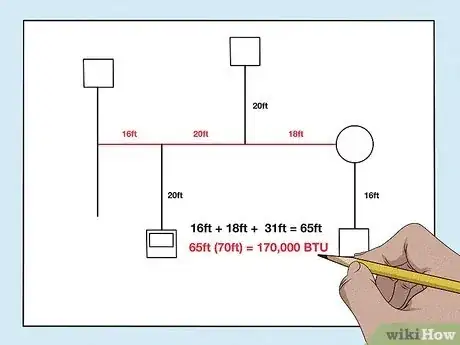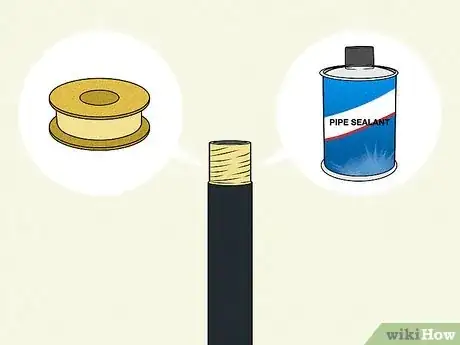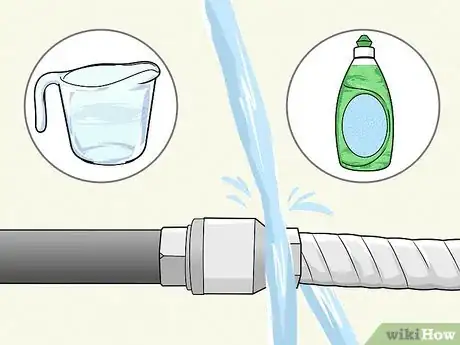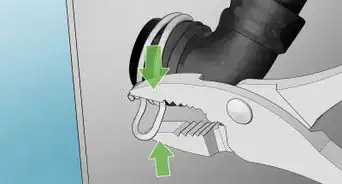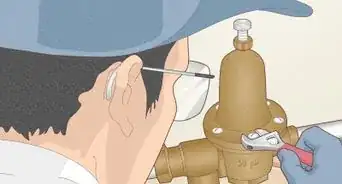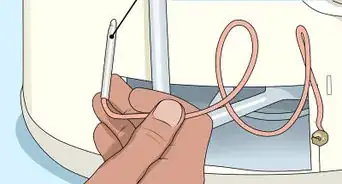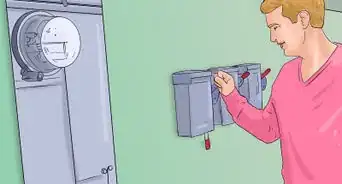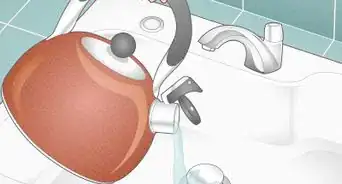This article was co-authored by wikiHow staff writer, Janice Tieperman. Janice is a professional and creative writer who has worked at wikiHow since 2019. With both a B.A. and M.A. in English from East Stroudsburg University, she has a passion for writing a wide variety of content for anyone and everyone. In her free time, you can find her working on a new crochet pattern, listening to true crime podcasts, or tackling a new creative writing project.
There are 18 references cited in this article, which can be found at the bottom of the page.
wikiHow marks an article as reader-approved once it receives enough positive feedback. In this case, 80% of readers who voted found the article helpful, earning it our reader-approved status.
This article has been viewed 621,368 times.
Learn more...
Are you installing a new gas range, gas fireplace, or other gas-powered appliance in your home? If so, you’ll need a new gas line to connect your appliance with your existing gas pipes. This isn’t an easy, quick, or simple task—gas lines can be very dangerous if they’re installed incorrectly, and you’re much better off hiring a registered contractor to get the job done. If you have a lot of DIY experience and feel comfortable tackling this project on your own, read on for plenty of tips and best practices to help you safely install a gas line at home.
Things You Should Know
- Get the required permits from your local government before you start installing a gas line.
- Calculate the gas piping size you’ll need using a chart in your plumbing code book.
- Seal your new pipes securely with gas-grade plumber’s tape, pipe sealant, and a pipe wrench.
- Pressure-test your pipes with an air compressor and spritz them with soapy water to detect any possible leaks.
Steps
Community Q&A
-
QuestionIs there a difference between black pipe and galvanized pipe? Can galvanized pipe be used for gas lines?
 Community AnswerGalvanized pipe has a coating which can strip off, resulting in flakes travelling through the pipe and getting stuck in orifices. Municipal or building codes will usually require that galvanized pipe can never be used for gas.
Community AnswerGalvanized pipe has a coating which can strip off, resulting in flakes travelling through the pipe and getting stuck in orifices. Municipal or building codes will usually require that galvanized pipe can never be used for gas. -
QuestionHow deep do I have to go underground?
 Community AnswerCheck with your local gas company. This is a dangerous operation, so you need the experts to help here and stay within the law.
Community AnswerCheck with your local gas company. This is a dangerous operation, so you need the experts to help here and stay within the law. -
QuestionCan I use copper pipe for my gas line?
 Community AnswerNo. Your swing joint would not be able to move with any shifting, due to solder holding your pipes into place.
Community AnswerNo. Your swing joint would not be able to move with any shifting, due to solder holding your pipes into place.
Warnings
Things You’ll Need
- Schedule 40 metallic piping
- Pipe couplings
- Pipe elbows
- Pipe sealant
- Gas-grade plumber’s tape
- Pipe wrench
- Shutoff valves
- Pressure gauge
- Air compressor
- Dish soap
- Water
- Spray bottle
References
- ↑ https://www.oregon.gov/bcd/Documents/brochures/2673.pdf
- ↑ https://www.danville.ca.gov/DocumentCenter/View/5291/Residential-Gas-Line-Submittal-Requirements-PDF
- ↑ https://www.youtube.com/watch?v=1fpy9NrE21c&t=2m8s
- ↑ https://www.youtube.com/watch?v=1fpy9NrE21c&t=0m23s
- ↑ https://www.youtube.com/watch?v=1fpy9NrE21c&t=0m56s
- ↑ https://www.youtube.com/watch?v=zsRWzLRoDAs&t=2m22s
- ↑ https://www.youtube.com/watch?v=1fpy9NrE21c&t=4m19s
- ↑ https://www.danville.ca.gov/DocumentCenter/View/5291/Residential-Gas-Line-Submittal-Requirements-PDF
- ↑ https://www.bobvila.com/articles/gas-shut-off-valve/
- ↑ https://www.youtube.com/watch?v=zsRWzLRoDAs&t=3m57s
- ↑ https://www.sanjoseca.gov/home/showpublisheddocument/25995
- ↑ https://www.youtube.com/watch?v=zsRWzLRoDAs&t=15m0s
- ↑ https://www.youtube.com/watch?v=zsRWzLRoDAs&t=14m53s
- ↑ https://www.youtube.com/watch?v=zsRWzLRoDAs&t=15m39s
- ↑ https://kingcounty.gov/depts/health/environmental-health/piping/plumbing/installing-gas-piping.aspx
- ↑ https://www.mass.gov/doc/view-the-plumbers-and-gas-fitters-consumer-fact-sheet/download
- ↑ https://www.contracosta.ca.gov/DocumentCenter/View/44633/RESIDENTIAL-GAS-PIPING
- ↑ https://www.youtube.com/watch?v=IcAWQNe4J4w&t=0m7s
- ↑ https://www.bobvila.com/slideshow/16-home-improvements-that-are-best-not-to-diy-49321
- ↑ https://www.mass.gov/doc/view-the-plumbers-and-gas-fitters-consumer-fact-sheet/download


